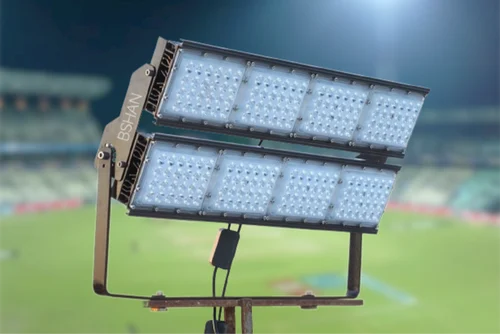Stadium lighting plays a critical role in ensuring that sports events are conducted safely and effectively. As technology continues to evolve, the options available for stadium lights have expanded significantly, leading to improved performance, energy efficiency, and cost-effectiveness. This article will explore the various types of stadium lights, their advantages and disadvantages, and considerations for selecting the right lighting solution for your venue.
Types of Stadium Lights
- High-Mast Lights
High-mast lights are towering fixtures typically mounted on poles ranging from 60 to 120 feet in height. These lights provide extensive coverage, making them ideal for large stadiums hosting sports such as football, soccer, and baseball. High-mast lighting systems can illuminate vast areas uniformly, eliminating dark spots and ensuring consistent visibility across the playing field. Advantages - LED Projection Lights
LED projection lights are becoming increasingly popular in stadiums due to their energy efficiency and superior light quality. These lights are often used in conjunction with high-mast systems to provide targeted illumination in specific areas of the venue. Advantages - Metal Halide Lights
Metal halide lights have been a staple in stadium lighting for years due to their high-intensity output. However, advancements in LED technology are gradually phasing out metal halide fixtures in many venues. Advantages
Key Considerations When Choosing Stadium Lights
- Venue Size
The size of your stadium will dictate the type and number of lights needed. Larger venues require more powerful lighting solutions to ensure adequate illumination across the entire area. - Type of Sport Played
Different sports have varying lighting requirements. For example, football fields require uniform lighting across the entire playing area, while baseball diamonds may benefit from focused illumination on specific areas like the pitcher’s mound. - Desired Lighting Levels
Adhering to illuminance standards established by organizations such as the Illuminating Engineering Society (IES) is crucial for ensuring optimal visibility during events. Proper lighting levels enhance player performance and improve spectator experience. - Energy Efficiency
With rising energy costs and a growing emphasis on sustainability, selecting energy-efficient lighting solutions is essential. LED technology offers significant advantages in this regard, consuming up to 75% less energy than traditional lighting options. - Maintenance Requirements
Regular maintenance is necessary to ensure that stadium lights operate effectively over time. Consideration should be given to the ease of access for maintenance tasks such as bulb replacement and fixture cleaning.
Conclusion
Choosing the right stadium lighting solution is vital for enhancing both player performance and spectator experience. While traditional metal halide fixtures have been popular in the past, LED technology stands out as the most energy-efficient and durable option available today. With their long lifespan, lower operating costs, and superior light quality, LED stadium lights are becoming the preferred choice for modern sports venues.
Investing in high-quality stadium lighting not only improves visibility during events but also contributes to long-term savings on energy bills and maintenance costs. Advanced LED systems, such as those provided by companies like Olympia Lighting, can offer greater durability, better light distribution, and customizable features like color rendering or dimming for different event needs. As technology continues to advance, facilities that prioritize efficient lighting solutions will be better equipped to meet the demands of athletes and fans alike.
In summary, whether you are upgrading an existing system or designing a new facility, understanding the various types of stadium lights available will help you make an informed decision that meets your specific needs while enhancing the overall experience at your venue.






